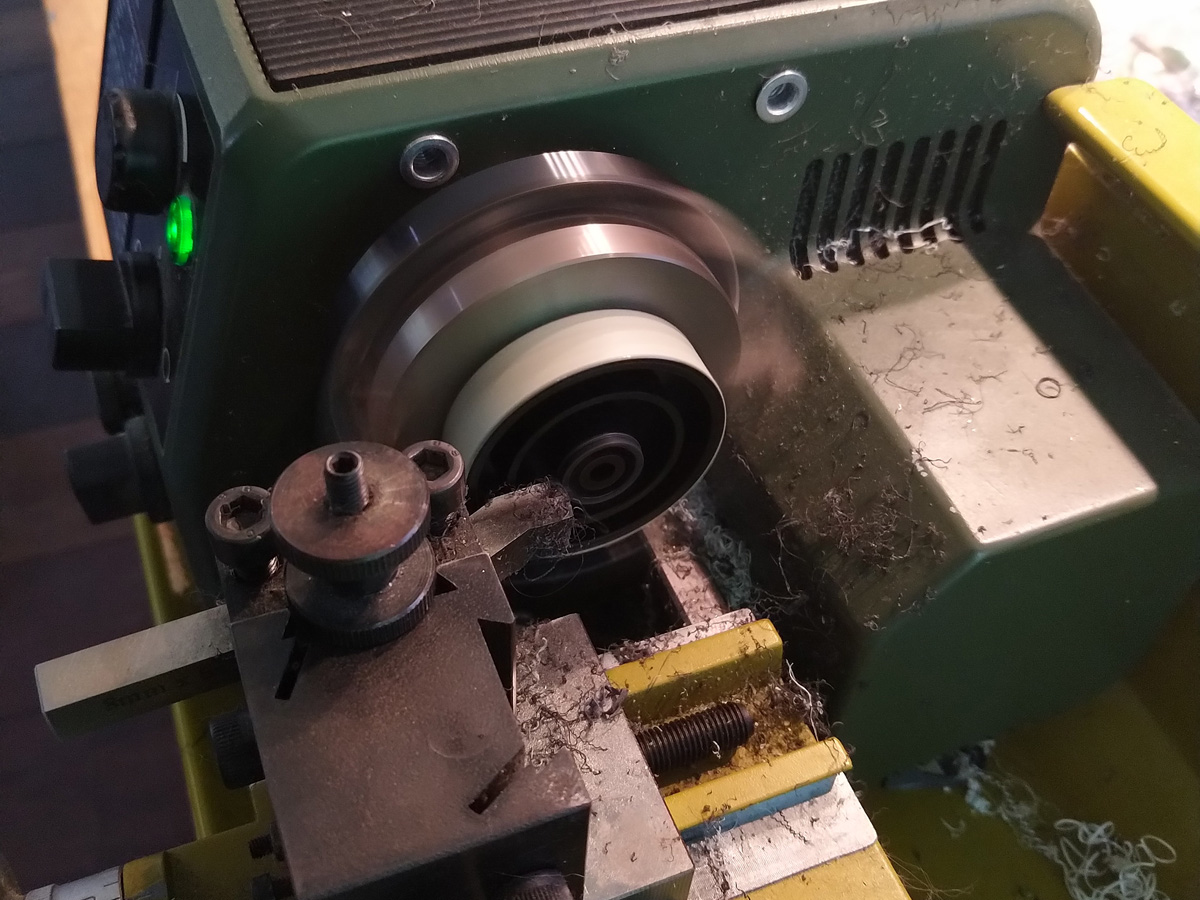I designed the amp using the Modushop H210 Dissipante, a large enclosure with large heat sinks on the side; the Hypex UCD180HG modules are small but you still require a bit of room when you plan to add twenty; initially the enclosure should have contained the miniDSP cross-overs, power supplies & amplifiers, plus a host of connectors. The Hypex amps and power supplies need to be fixed by m3 screws from the rear so I added a small aluminium plate inspired by an amp build I saw here.
I could spend a few hours at the machine shop at work to drill in all the holes and add the threading. Here is a work-in-progress pic showing the aluminium plates and all the modules for the first two channels installed running a test using the miniDSP 2×4. Here the internal cabling is not shielded, so some noise may be self-inflicted at this stage (noise tests were performed with the miniDSP for the old Orion setup too where it was also noisy while the ASP was not).
I wanted to use the 12V trigger from the preamp to turn on the Hypex SMPS1200 power supply. Counter-intuitively, the Hypex PSU needs an active signal to be put in sleep mode rather than turn on, so the trigger needs to be inverted. I initially used a separate Meanwell 12V power supply to power the miniDSPs and a voltage divider to reduce the voltage to the trigger of the Hypex power supply that should not exceed 5.5V. Just for the fun of it I added two quiet ventilators normally used for PCs and a small red LED light in the front. I bought the quietest fans I could find, 60mm Noiseblocker BlackSilent PRO PR-1s (a lot of name for €11 product). At a reported 10.7 dB the noise level is really low, and yet, not silent at all. As the LED was also a bit bright too I eventually used a Meanwell 5V supply for the triggering, LED and fans that are now not blinding and truly silent, respectively.
The continuous loss of components could not be explained.
A close-up of all amps and wiring in place; I replaced the wiring and this time it’s all shielded & twisted microphone cable. The amps are grouped in sections of 8 or 4 (centre) units per PSU.
As a final act of unnoticeable beautification, the amp, ASP, pre-amp and bluray player were given the same feet; that required parts to be milled off to fit, of course.
LX521: introduction
LX521: deriving the digital filter
LX521: building the analog filter
LX521: building the power amp
LX521: building the speaker
LX521: results






